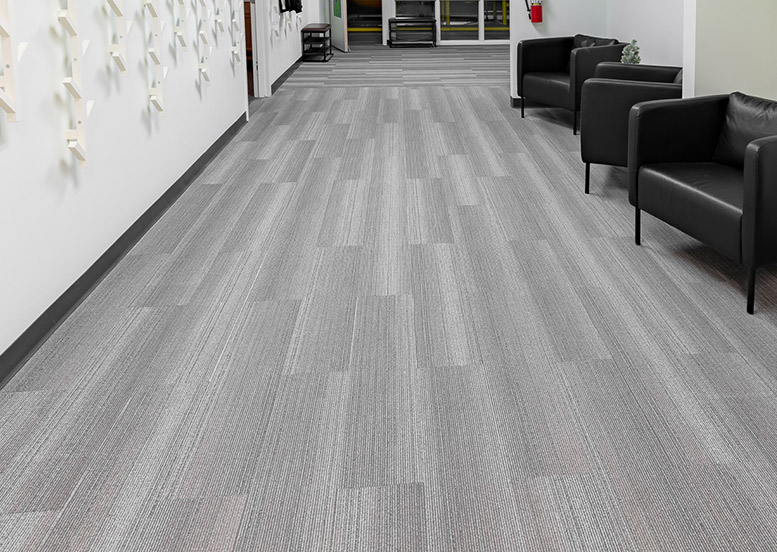When it comes to designing a functional and attractive business space, one of the most crucial elements to consider is commercial flooring. This essential aspect of any commercial interior not only affects the appearance of the space but also impacts safety, durability, maintenance, and cost-efficiency. Whether you’re outfitting an office, retail store, hospital, or restaurant, selecting the right type of commercial flooring can make all the difference in the day-to-day operation and long-term appeal of the space.

The demands placed on commercial flooring are significantly higher than those in residential settings. High foot traffic, heavy equipment, spills, and frequent cleaning all take a toll. Therefore, durability is a top consideration. Materials like vinyl composition tile (VCT), luxury vinyl tile (LVT), polished concrete, and ceramic tile are popular choices due to their ability to withstand daily wear and tear. Good commercial flooring should be able to maintain its structural and aesthetic integrity even under harsh conditions.
Another factor to consider when choosing commercial flooring is safety. In many industries, especially in healthcare and hospitality, slip resistance is not just a feature—it’s a necessity. Flooring materials that provide traction help reduce the risk of slips and falls, protecting both employees and customers. Textured surfaces, non-slip coatings, and rubber flooring options are among the many commercial flooring solutions that prioritize safety without compromising on style.
Appearance and branding are also significant elements influenced by commercial flooring. The floor is one of the first things people notice when they enter a commercial space. A sleek, well-designed floor can reinforce a company’s branding and create a welcoming environment. From natural stone patterns in high-end retail stores to bright, bold colors in schools or fitness centers, commercial flooring options are vast and adaptable to almost any aesthetic.
Maintenance is another important factor when evaluating commercial flooring options. In fast-paced environments, frequent cleaning is often required, making ease of maintenance a key feature. Some materials resist stains and moisture better than others, which makes them ideal for food service or medical environments. Commercial flooring options like vinyl and epoxy coatings are not only easy to clean but also resistant to chemicals, ensuring they remain in good condition even with constant use.
Cost is always a consideration for any business, and commercial flooring is no exception. It’s important to weigh initial installation costs against long-term durability and maintenance expenses. While some materials may have a higher upfront cost, their longevity and reduced maintenance needs can make them more economical over time. Commercial flooring should be viewed as a long-term investment rather than a short-term solution.
Environmental sustainability is increasingly becoming a priority for many businesses, and commercial flooring can play a role in supporting green building practices. Materials such as recycled rubber, bamboo, and low-VOC vinyl provide eco-friendly alternatives that do not sacrifice performance or style. Choosing sustainable commercial flooring not only supports environmental goals but can also contribute to green building certifications like LEED.
In addition to material type, installation methods are an important part of commercial flooring projects. Proper installation ensures longevity and reduces the need for repairs or replacements. Commercial flooring contractors often use specialized techniques, such as moisture mitigation systems or leveling compounds, to prepare the subfloor. Choosing an experienced contractor is essential for ensuring the commercial flooring performs as expected.
Noise reduction is another performance feature often required in commercial environments, especially in offices, schools, and multi-level buildings. Some commercial flooring materials are specifically designed to absorb sound, creating quieter and more comfortable environments. Carpet tiles, cork, and acoustic underlayments are commonly used to address this concern while still meeting other practical needs.
Technology is also transforming the commercial flooring industry. Innovations such as anti-microbial surfaces, embedded sensors for occupancy tracking, and self-healing finishes are pushing the boundaries of what commercial flooring can do. These advancements are particularly useful in healthcare, education, and high-tech workspaces, where performance and innovation must go hand in hand.
To summarize, choosing the right commercial flooring is a strategic decision that affects more than just the look of a space. It impacts safety, comfort, branding, budget, and environmental responsibility. With so many options available, it’s essential to assess the specific needs of your commercial space and consult with flooring professionals to find the best solution. Whether the goal is to create a luxurious retail atmosphere or a sterile healthcare environment, commercial flooring plays a foundational role in achieving business objectives.
In conclusion, commercial flooring is far more than a design feature—it is a functional asset that influences the efficiency, safety, and success of a commercial operation. By taking the time to evaluate different materials, designs, and installation practices, business owners can ensure their floors support their goals now and into the future. The right commercial flooring will enhance the space’s usability, appeal to customers and employees, and withstand the challenges of a busy business environment.

